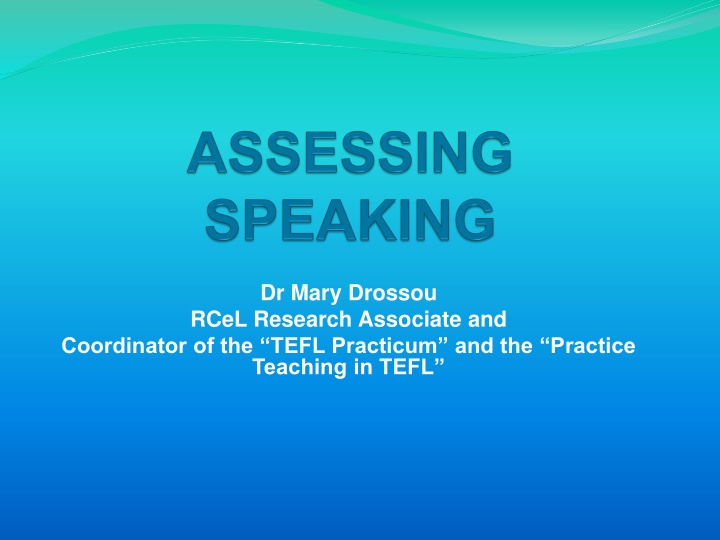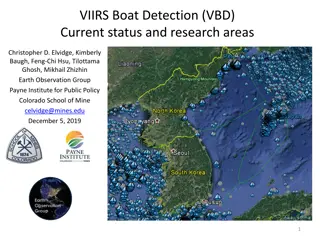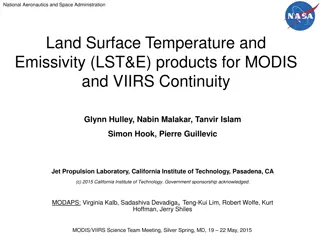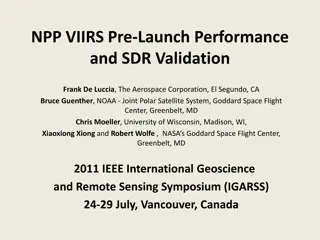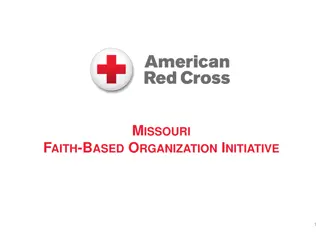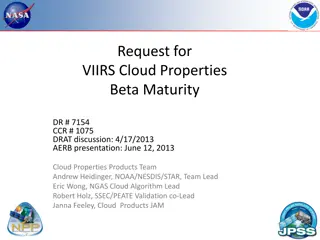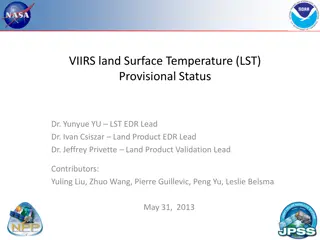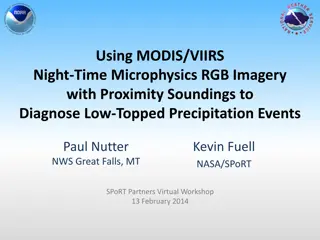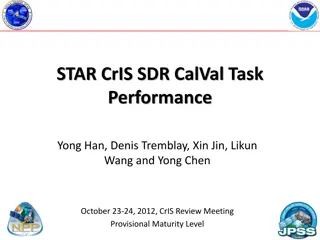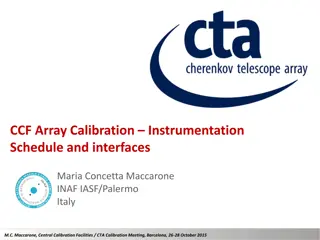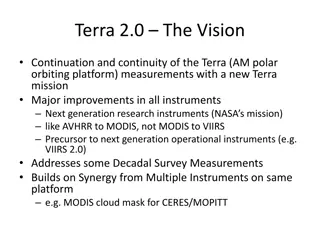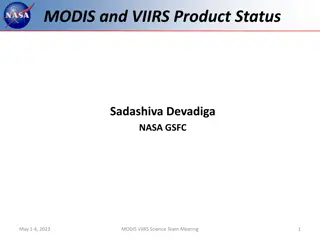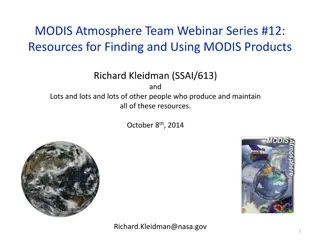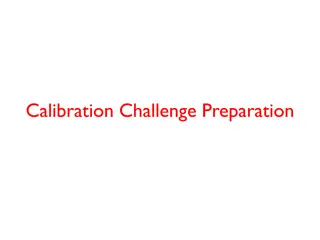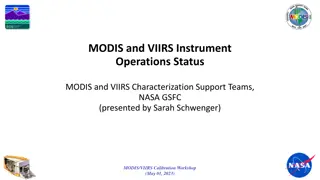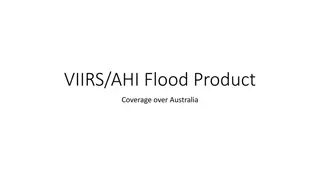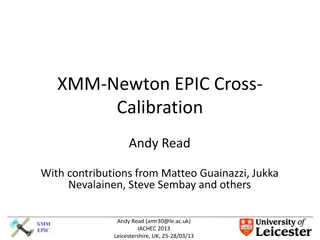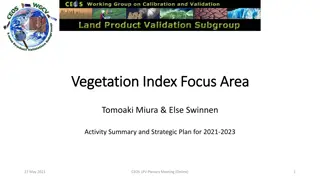Calibration and Cross-Calibration of MODIS and VIIRS Data
This image gallery showcases the harmonization and cross-calibration of MODIS and VIIRS satellite data for accurate measurements. It includes cross-calibration coefficients, ratios over deep convective clouds, and distribution of calibration sites. The research conducted by Eric Vermote, Aisheng Wu, and others highlights the importance of precise calibration for Terra, Aqua, SNPP, NOAA-20, and VIIRS instruments.
Download Presentation

Please find below an Image/Link to download the presentation.
The content on the website is provided AS IS for your information and personal use only. It may not be sold, licensed, or shared on other websites without obtaining consent from the author.If you encounter any issues during the download, it is possible that the publisher has removed the file from their server.
You are allowed to download the files provided on this website for personal or commercial use, subject to the condition that they are used lawfully. All files are the property of their respective owners.
The content on the website is provided AS IS for your information and personal use only. It may not be sold, licensed, or shared on other websites without obtaining consent from the author.
E N D
Presentation Transcript
Dr Mary Drossou RCeL Research Associate and Coordinator of the TEFL Practicum and the Practice Teaching in TEFL
Aims of presentation To familiarize students with concepts related to the assessment of speaking To distinguish between different types of assessment To raise awareness of aspects of speaking task design To evaluate an oral test on the basis of an assessment grid
Speaking test: A definition A speaking or oral test is defined as a test in which a person is encouraged to speak, and then assessed on the basis of that speech. It can be used alone or combined with tests of other skills (Underhill 1997: 1 & 7).
To make a test: You need full local knowledge You need to design the test as a whole You need a human approach You need to find a suitable balance You need to adapt and improve
Useful terminology Learner Interviewer Interlocutor Assessor Rater Examiner Communicative Authentic or realistic task Objective Stimulus Validity Reliability Moderate
Aims and Resources: Aims: Proficiency Placement Diagnosis Achievement Resources: People Time Equipment and facilities
Assessing speaking skills through: Self-assessment Classroom based assessment Performance assessment through examination batteries
Types of interaction in speaking tests A learner speaks: To an interviewer who is the assessor To an interlocutor, who is not involved in assessment To another learner To a group of learners To a tape recorder and is assessed by one or more assessors
Marking systems: The number of assessors The selection and training of assessors Marking recorded oral tests Mark categories Weighting Rating scales Holistic scoring Analytic scoring The role of the assessor Classroom assessment and large-scale assessment
Views of spoken language and speaking tests 1 The literary view of spoken language First-generation speaking tests(some examples) Reciting a poem or speech Reading aloud of poetry or prose Summarizing or retelling a story Discussion of literary texts Presentation: prepared lecture, prepared topic Limitations of first-generation speaking tests: Interactiveness Authenticity Test security Grading / scoring
Views of spoken language and speaking tests 2 The linguistic view of spoken language Second-generation speaking tests (some examples) Discrete-point speaking tests Grammatical cues Functional cues Taking one half of a dialogue Limitations of second-generation speaking tests: Limited scope Washback effect Washforward effect Limited scope
Views of spoken language and speaking tests 3 The communicative view of spoken language Third-generation speaking tests (some examples) Interactional short turns Interactional long turns Transactional short turns Transactional long turns
Views of spoken language and speaking tests 4 First generation: pre-scientific - grammar-translation and global tests of `disembodied language Second generation: scientific - audio-lingual approach and discrete-point tests of individual language points Third generation: post-scientific - communicative approach and realistic tests of all skills
Speaking tests Authenticity of task Product authenticity This type of authenticity refers to realism and is most readily apparent in speaking techniques such as role play or simulation, which usually create a real-world scenario Process authenticity This refers to communicative authenticity, ie a situation is created in which some kind of information, opinion or reasoning gap has to be bridged using spoken language, regardless of whether such a task would exist in the real world. .
Some types of speaking tasks Discussion/conversation Oral report Learner-learner joint discussion/decision making Role play Interview Learner-learner description and re-creation Form-filling Question and answer Reading blank dialogue Giving instructions/descriptions/explanat ion Using a picture or a picture story as a cue Precis or re-tell story or text from aural stimulus Re-telling a story from written stimulus Reading aloud Translating/Interpreting Sentence completion from aural or written stimulus Sentence correction Sentence transformation Sentence repetition
Areas of language knowledge (Bachman and Palmer, 1996:68) Organisational knowledge (how utterances or sentences and texts are organised) Grammatical knowledge (how individual utterances or sentences are organised) Knowledge of vocabulary, syntax and phonology/graphology Textual knowledge (how utterances or sentences are organised to form texts) Knowledge of cohesion, rhetorical or conversational organisation Pragmatic knowledge (how utterances or sentences and texts are related to the communicative goals of language users and to the features of the language-use setting) Functional knowledge (how utterances or sentences and texts are related to the communicave goals of language users) Sociolinguistic knowledge( how utterances or sentences and texts are related to the features of the language-use setting) Knowledge of dialects /varieties, registers, natural or idiomatic expressions, cultural references and figures of speech
Task design basic considerations: Type of task (controlled, guided, semi-guided) Topics Time allotment Rubrics (or instructions) specify how the test taker is expected to perform Stimulus material (visuals, multimodal texts) the stimulus the test taker must respond to Expected response: What the teacher expects students to do with the task Post-task evaluation: Assessing the effectiveness of the assessment task: Did the task discriminate well among the student group? Were the products easy to evaluate? Were students able to speak to their potential?
Can-do statements What types of skills and competences are assessed at each level?
